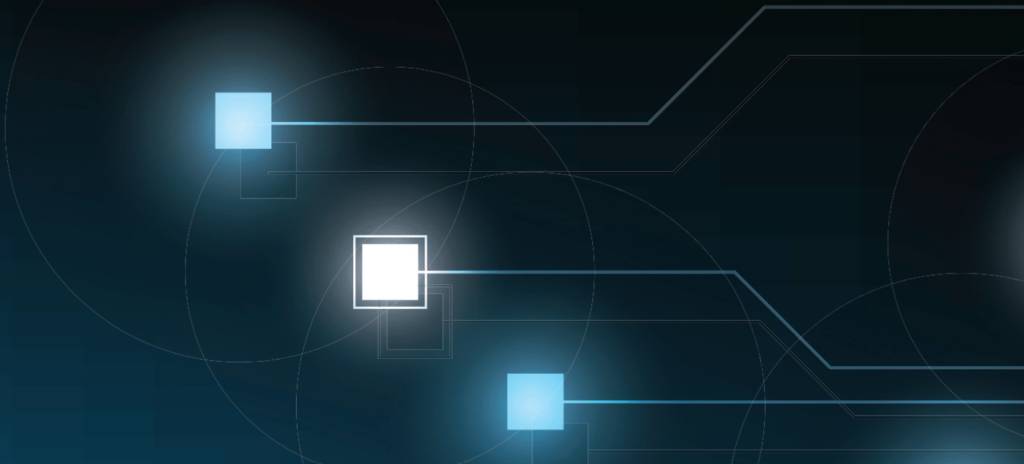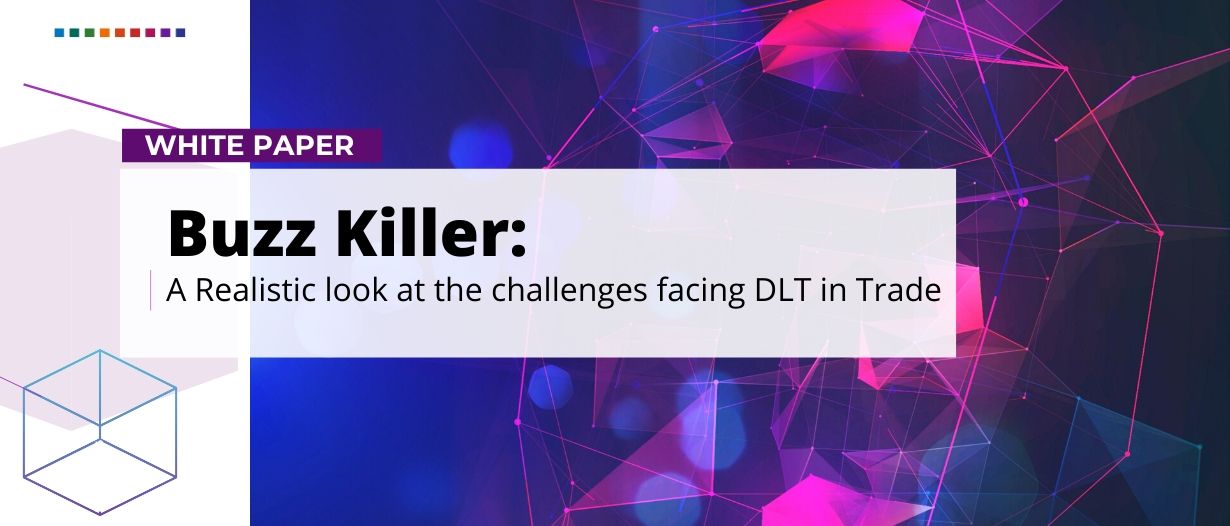Take a step away from the hype and look at the challenges that are facing the industry. Only then can the industry develop concentrated strategies to combat them.
While discussing the many opportunities that DLT has may inspire dreams of an Arcadian future, it is crucial to take a step away from utopia and understand the real problems and challenges that block the path ahead. Based on our survey results, the most pressing challenges facing the industry today surround technical issues like interoperability, and others like standardization, legal concerns, and privacy.
“There is a lot of Buzz which makes it hard to differentiate real use cases from buzz riders”
-Adi Weinstein, Sales Operation Manager, Wave
Interoperability
Perhaps the most widely referenced technical challenge for the industry is to address that of interoperability. Based on our survey, 91 percent of respondents say DLT faces an interoperability challenge, with 53 percent of those indicating that it is a big challenge. In the DLT space, the term interoperability has become a catchall term to refer to several distinct challenges. Interoperability issues can arise at various levels: at the technology level from DLT to DLT (e.g. the ability of Hyperledger Fabric to interoperate with Corda), as well as at the level of data models, semantics and processes used in specific applications and platforms. The meaning of the phrase interoperability does not stop there. It can also be used to describe the ability of DLT to seamlessly integrate with other technological advancements such as IoT. This form of interoperability will be crucial for realizing the full potential of a digitized ecosystem. Yet another meaning for the term is the ability of DLT to integrate with legacy back-office systems, like ERP systems. Without this, many firms will be less likely to fully adapt to a DLT network since it may radically disrupt their existing operating methods in a prohibitive manner.
Why exactly is interoperability so important? The answer lies in understanding that any new project needs to reach a certain critical mass before its growth can be organic and not merely driven by early adopters and product champions. Without any interoperability, DLT platforms are forced to live in isolation, unable to fully access these network effects. Connecting networks and having them co-operate with each other can lead to real change for two reasons. First, it will help networks reach this critical mass where they can begin to experience organic growth. Second, it allows for a compounding of investments in the space as platforms and technology providers can pool their resources into tackling the challenges that arise. Furthermore, 65 percent of survey respondents using or developing DLT admitted that choosing between various DLTs is a challenge that their organization has been facing. The ability of multiple DLT networks to interoperate, would serve to mitigate this challenge as operating on one network would progressively allow for transacting with parties on a differing network.
In addition, 86 percent of respondents using or developing DLT indicated integration into back-office systems as a challenge their firm has faced. This suggests that new DLT networks should be made interoperable, not only with other networks and cutting-edge technology but also with legacy backend systems. Mohua Banerjee, a Senior Business Development Manager at Finacle Blockchain Solutions, points out that “a key requirement [for global scale and adoption] is to have a transitory phase, which straddles legacy and new systems, to enable adoption while delivering value to the participants.” Having interoperability of this kind will relieve some of the pressure for initial deployments to have applications better than existing technology as cited by some respondents. Interoperability of DLT technology in the international trade space is a significant challenge facing the industry today and is regarded by many as being a crucial next step for the industry to tackle.
“A lack of required network effects creates a reluctance to invest, which in turn creates a lack of required network effects. A circular problem.“
-Hans J. Huber, Trade Finance Innovation Project Manager, ICC DSI
Standardization challenges
The international trade industry has long been plagued by the challenge of standardization. Developed over many centuries and through many independent geographical regions, the customs, terms, processes, definitions, and various other semantic measures naturally vary from place to place. Over time, as the world has become more globalized, this has become a greater and greater challenge. In a single port today, more often than not, there are vessels and goods that originated in every corner of the globe. This increased scale, without a degree of standardization, is a recipe for inefficiencies, particularly as the industry moves to become more digitized. It is no surprise that 47 per cent of respondents to our survey ranked the lack of standards as a big challenge that their industry is facing, in second position behind lack of legal clarity.
To assist in the quest for standardization, several initiatives have sprung up. Some, like the ISO/TC 307, the ITU Working Group, and ICC DSI are working specifically with relation to Blockchain technology, while others like the WCO and UN/CEFACT are focusing on the standardization of data models that are related to trade. While the number of initiatives working in this space is a great indication of the recognition of the problem, it does necessitate a need for inter-initiative harmonization. Several independently successful standardization efforts will do nothing more than create more sets of standards that must be selected between. When it comes to standardization, developing and maintaining a strong governance structure is key.

Governance Challenges
Since DLT is not a technology that individual firms can valuably deploy on their own, it is crucial for multiple stakeholders to work together. As previously discussed, these cooperative payoffs are bringing key stakeholders into mutual discussions. While this is true, it does not make working and coordinating with lots of different stakeholders an easy process. The difficulty experienced by many firms has been to work with multiple actors who are at different levels in their innovation, digitization, and transformation processes. On top of this, many of the necessary stakeholders operate across different legal jurisdictions, emphasizing an additional challenge of jurisdictional standardization to add on to the substantial challenge of amending legal systems to accept trade digitization.
Legal challenges
Navigating the legal environment seems to pose particular challenges for efforts towards trade digitization. One such challenge is the lack of recognition of e-signatures and e-documents. In many jurisdictions around the world the formal recognition of e-signatures on negotiable documents has yet to be solidified. This lack of formidable acceptance comes despite several historical efforts from the UN since the turn of the century. In 2001, the United Nations Commission of International Trade Law (UNCITRAL) adopted a model law on electronic signatures, however this has only been adopted in some 30 jurisdictions. Only 12 parties ratified the United Nations Convention on the Use of Electronic Communications in International Contracts (ECC) adopted in 2005 while only two have ratified the UNCITRAL Model Law on Electronic Transferable Records (MLETR) from 2017. The question of the recognition of e-signatures and e-documents is also being discussed in the context of the WTO e-commerce Joint Statement Initiative launched in December 2017.
Recognition of -signatures and e-documents is, however, not sufficient. As noted by the English Law Commission, “the question of whether an e-signature is secure and reliable is a different matter from whether that signature is valid in law”. No DLT consensus algorithm, or any computer algorithm for that matter, is capable of determining whether a certain transaction has occurred as a result of a legally enforceable contract. There is nothing inherent about a DLT transaction that makes it legally binding. This fact draws a sharp divide between the legally agnostic DLT utopia envisioned by some hype-curve riding enthusiasts and DLT reality.
It is also important to discuss the security and reliability of an e-signature. The reliability of an e-signature is no greater than the reliability of a user’s cybersecurity practices. To further compound this, when operating in the inherently off-chain realm of international trade, it is important to realize that a DLT’s immutability does not equate to its veracity. Just because a DLT itself is “trustless”, does not mean that all parts of its larger ecosystem are. An ecosystem as a whole is only as reliable as its least reliable link.
All of this raises the legal question of what happens when a DLT record deviates from a traditional analysis of title ownership? This could occur if a consensus algorithm compliant transaction occurred relating to a contract that was later deemed to be void by law. Under this scenario, the legal title would remain with the original holder while the blockchain record would indicate that the new party holds title. Given the immutable nature of a DLT network, the only means of rectifying such a situation would be to append a new transaction reversing the original. Given the multi-jurisdictional nature of international trade, forcing such a remedy simply may not be possible. According to the ICC, TFG and WTO survey on DLT in trade, legal clarity over ownership and jurisdiction of data and transactions is a significant challenge. Nearly 95 percent of survey respondents indicate that they believe it is a challenge, with 65 percent of those indicating that they believe it is a big challenge. While some permissioned networks have attempted to overcome this by implementing rights for certain nodes to retroactively edit the contents of blocks, this seems to retract from the very value of a DLT network. This is because an attacker need only compromise one of these privileged nodes to alter the entire history of the ledger. Theoretically, this makes a DLT no more, and due to the opening of additional single points of failure, perhaps even less, secure than the incumbent centralized datastores it seeks to replace.
“Through a combination of unilateral and multilateral approaches, we believe the challenges in this sector may be addressed”
-David McLoughlin, Commercial Lead, we.trade Innovation DAC

Privacy challenges
The core functionality of a blockchain, its immutability, seems to contradict with much of the growing global privacy legislation of today, such as the European GDPR. Article 17 of the GDPR, the right to erasure, more commonly referred to as the right to be forgotten, states that a “data subject shall have the right to obtain from the controller the erasure of personal data concerning him or her without undue delay”. However, the immutable nature of DLT, and arguably the core of its value proposition, prevents data from being deleted. This very contradiction between the functionality of DLT and the legal requirements of many countries poses some concerns, but is an area being addressed.
The Commission Nationale de l’Informatique et des Libertés (CNIL), an independent French administrative regulatory body whose mission is to ensure that data privacy law is applied to the collection, storage, and use of personal data, has proposed some workarounds to this inconsistency. They advise that the processing and storing of data should be done off-chain, and that the data recorded on the blockchain itself should only be a commitment, a hash generated by a keyed-hash function or a ciphertext obtained through “state of the art” algorithms and keys. By doing this, (like for example Enigio’s trace:original), the data controller can make data practically inaccessible yet demonstrably verifiable, moving closer to the seemingly contradictory desired effects of data erasure and immutability.
In this same report, the CNIL acknowledges that “It is technically impossible to grant the request for rectification or for erasure made by a data subject when cleartext or hashed data is recorded on a blockchain.” This complements the Privacy by Design obligations under Article 25 of the GDPR since these concerns must be addressed during the initial design stage of a network in order to be compliant with the regulation.
























